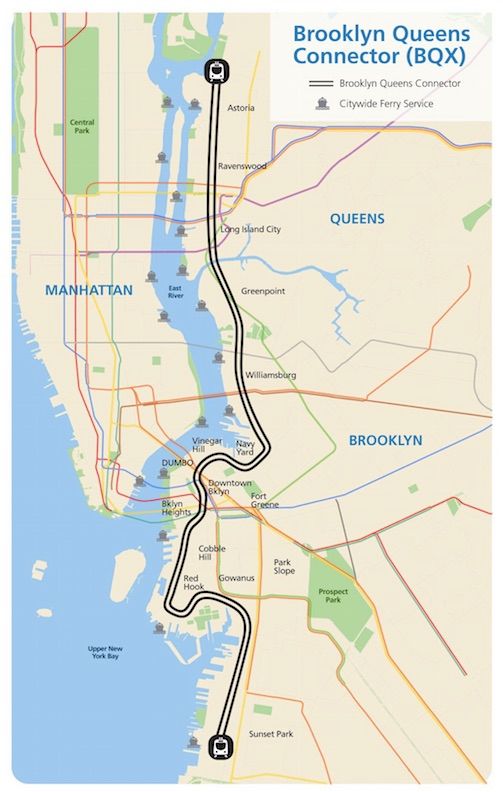Mayor’s Office Responds To Flooding Danger Of Brooklyn-Queens Streetcar Route


Mayor Bill de Blasio and his administration have been engaged in building significant momentum behind the planning and construction of the Brooklyn-Queens Connector streetcar (BQX), which would link Sunset Park’s burgeoning economic hub with northern Brooklyn, terminating at Astoria, Queens.
In a recent briefing with reporters, Deputy Mayor Alicia Glen and other leaders announced that two potential bridges may be built as part of the projected $2.5 billion project.
According to Glen, bridges may be necessary at both the Hamilton Avenue bridge over the Gowanus Canal as well as the Pulaski Bridge (which connects Greenpoint, Brooklyn, and Long Island City, Queens).

While a significant amount of the streetcar line runs throughout flood plain areas in both Brooklyn and Queens, the issue was not addressed during that briefing.
In a conversation with Park Slope Stoop, Wiley Norvell, Deputy Press Secretary for the Office of the Mayor said, “the infrastructure [for the Brooklyn-Queens Connector] is very different from a tunnel that floods. The rails would be embedded into the street.”

Norvell also explained that there were important lessons learned from the manner in which transportation resumed after Superstorm Sandy. “Surface transportation was first to come back,” explained Norvell. “Buses came back within a matter of days.”
In addition, Norvell pointed out that the “importance of fortifying the coastline was made very clear” after Sandy. “There is a $20 billion investment in storm protection.”
While the Gowanus neighborhood is historically flood prone, Norvell expressed a confidence in being able to address these issues in relation to infrastructure of the BQX. “The technology is quite resilient,” he said.
Fourth avenue and Carroll street #flooding right now.. pic.twitter.com/lGzwPHuOMi
— root hill cafe (@roothillcafe) May 8, 2013
According to Norvell, the importance of creating a transportation infrastructure for “100,000s of people is key. We need to invest for the people in those neighborhoods,” he said.
The streetcar system would eclipse recent projects throughout the United States. The New York Times reported that there are plans for 30 stops on the proposed 16-mile route.
Even if the streetcar infrastructure can withstand significant flooding, agreements have not yet been made over whether riders of BQX would be able to use MetroCards in order to transfer to buses and subways for free. However, the city is committed to working with the MTA on this issue.
Glen expects the first round of public approvals (inclusive of community board meetings) to take place in 2017. Glen says that ground-breaking is projected for 2020 with BQX service to begin in 2024.



